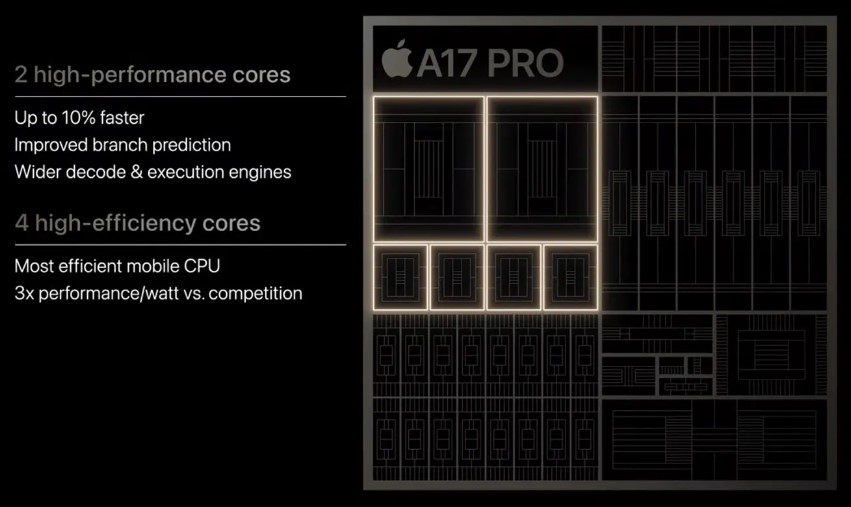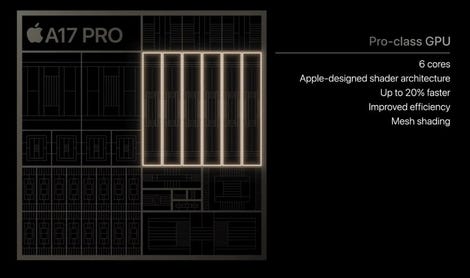Deep dive into the A17 Pro, Apple’s new chip for the iPhone 15 Pro


While the iPhone 15 is equipped with the old A16 Bionic chip that equips the iPhone 14 Pro and Pro Max. The iPhone 15 Pro and Pro Max are equipped with a brand new chip, the A17 Pro.
Let’s start with the essentials: The A17 Pro is Apple’s first chip based on a 3-nanometer semiconductor manufacturing process, which represents a considerable technological leap compared to the 5-nanometer process used in the A16 Bionic. A smaller manufacturing process means that more transistors can be placed closer to each other on the chip, resulting in a smaller, faster, cooler and more energy efficient chip.
According to Apple, these transistors are so small that some of their elements measure only 12 silicon atoms. In short, they are tiny.
The very high-end mobile processor
Each chip has 19 billion transistors, six billion more than the A16 Bionic.
As for the cores, the A17 Pro is identical to its predecessor, with two high-performance cores and four energy-efficient cores, although we do not yet know the speed at which these cores work (the A16 Bionic’s cores work at 3.46 GHz and 2.02 GHz respectively). But Apple said that they are 10% faster, that they have a better prediction of the connections for a faster execution of the code, and that the decoding and execution engines have higher bandwidths.
Apple claims that the A17 Pro is the fastest single-threaded mobile processor – and I have no doubt about this statement, given that the competition is struggling to keep up with the A16 Bionic – with performance that rivals that of high-end PCs.
A dedicated USB 3 controller
Efficiency cores are also the “most efficient mobile processor” and offer three times more performance per watt than the competition.
The neural engine – the part of the chip that manages machine learning and performs tasks such as voice recognition on the device, autocorrection or determining the subjects in the photos you take for indexing purposes – has 16 cores – the same as those of the A16 Bionic – but its performance is multiplied by two and it is capable of performing 35 trillion operations per second.
The A17 Pro also integrates engines dedicated to video processing in the ProRes codec, an AV1 video decoder and an engine that powers ProMotion and the screen.
With the Lightning port having been replaced by USB-C, Apple has also added a dedicated USB 3 controller that supports transfer speeds of up to 10 gigabits per second.
A “revolutionary” GPU
But what about the GPU?

The A17 Pro has a completely redesigned GPU. Apple/ZDNET
This GPU is, according to Apple, “revolutionary” and “brand new” and a GPU that Apple describes as “pro class”. It has been redesigned with a view to performance and efficiency, as well as management of complex applications, and also includes new rendering functions. It has six cores, one more than the A16 Bionic, which allows it to be up to 20% faster.
In addition, and this is aimed at game developers and AR developers, the A17 Pro’s GPU has a hardware acceleration of ray tracing to improve the accuracy of the light reflected in the rendered scenes. Hardware acceleration allows ray tracing four times faster than software rendering and allows much higher frame rates, and therefore, a more immersive experience.
A new software feature aimed at improving games is Metal-effects upscaling, which combines the GPU and the neural engine to provide better graphics while consuming less energy.
So this little chip contains a lot of things.
Source: “ZDNet.com “








